Lijiang, Yunnan Province, is home to the Naxi, a minority ethnic group with rich culture. The Naxi are the closest relatives of the Tibetans. According to historians, the Naxi descended from ancient nomads called the Qiang, who lived in pre-dynastic times. They migrated to Yunnan between the 1st century and the 10th century. Then, they broke up into different ethnic sub-groups, including the Naxis and Mosuo. Naxi is an acronym consisting of “Na” for “honorable” and “xi” for human beings. The earliest mention of the Naxi is in the 2000-year-old Records of Historian. So, they’re one of the oldest ethnic groups in Yunnan Province with documented history.
Naxi customs and traditions are intertwined with the Dongba culture and religion. This unique culture emphasizes the connection between the human world and the natural world. The Naxi people practice Dongba culture using scriptures, art, dance, and music. They chant the scriptures, engage in about 60 Dongba dances, and create colorful paintings to proclaim their beliefs. For example, the world-famous Painting of Sacred Road to Heaven depicts death releasing the soul from suffering. Today, Naxi’s unique customs and traditions attract millions of tourists to Lijiang and other top destinations across Yunnan.
You can take a Naxi cultural tour to learn more about their customs and traditions, the Dongba religion, festivals, and everything in between. Here is an in-depth tour guide to help you discover the secret land of the Dongba.
Religious Beliefs of the Naxi People
The Naxi are followers of the Dongba religion, with a few believers of Lamaism, Buddhism, Taoism, and nature gods. Dongba is unique because it is intertwined with Naxi culture. Historians believe that Dongba emerged after ancient Naxi shamanism fused with Tibetan’s Bon religion. Both share many rituals, which pre-date Tibetan Buddhism. However, Dongba doesn't have an organizational structure, systematic doctrines, or temples. It is practiced as a way of life and guided by a Dongba, referring to a “wise man,” or shaman.
A Dongba is responsible for the community’s spiritual well-being. They are also the custodians of Dongba scriptures and Naxi writing, literature, and art. The Naxi people still rely on Dongbas to interpret and chant the pictographic scriptures. Dongbas are also experts in medicine, agriculture, astronomy, history, and more. In Lijiang, you'll find several Dongba sects named after master interpreters such as Baidi, Baisha, and Ben. Ben is the oldest Dongba master sect, while Baidi refers to the Holy Land of Dongba Sect. So, followers of the Baidi sect believe that their master Dongba visited the holy land to receive the ceremony of sect entrance. During your guided tour of Lijiang, learn more about the Dongba Scriptures and experience master chanters in action.
![Religious statue of Dongba Religion of Naxi people]()
 Religious statue of Dongba Religion of Naxi people
Religious statue of Dongba Religion of Naxi people
Naxi’s Unique Language
The Naxi language is closely related to the Tibetan-Burmese language and is divided into Western and Eastern dialects. The Eastern dialect is spoken by the Mosuo minority, while the Naxi proper are linked to the Western dialect. More Naxis began speaking and writing in Han Chinese after the Yuan and Ming Dynasties. However, the Naxi have traditionally used the Dongba language. This unique written language belongs to the early form of the origin of writing and combines pictograms, conceived over 1,000 years ago. Naxi pictographs leverage artistic calligraphy to create phonetic characters that indicate specific sounds and meaning. A single character can have several interpretations. So, it is difficult to learn and translate the language.
The Naxis use another pictographic language called Geba, regarded as Dongba’s little brother. But the Geba system is more complex than Dongba. Both Geba and Dongba conveyed Naxi history and culture into the 21st century, providing a peek into the evolution of languages over the past 1,000 years. In 1957, language specialists implemented a Latin-based phonographic writing system for Naxi. Most of the language can now be recorded in the canon, spreading Naxi history and traditions worldwide. Dongba language is the only pictograph globally still in use today. This living fossil is a cultural treasure for all mankind.
![Dongba Characters]()
 Dongba Characters
Dongba Characters
Traditional Houses of the Naxi
Traditional Naxi houses are wooden structures similar to log cabins with different floor plans and layouts. Wooden beams are held together by ropes harvested from plants, so they don’t use nails. Most Naxi houses in the old town of Lijiang have two stories, with three or four rooms and an inner courtyard enclosed by a wall called a Zhaobi. The Zhaobi wall defines the layout and compound. For example, three rooms enclose the courtyard to the north, east, and west with the Zhaobi wall on the south. East and west rooms flank the Zhaobi wall and the main room, creating a secure enclosure. Four-roomed houses have a big yard at the center, with smaller interconnected or separate yards.
Naxi courtyards feature plum trees, chrysanthemums, orchids, and other flowering plants, creating sweet-scented experiences. These mini-botanical gardens also proclaim Naxi’s love for plants and nature. The entire structure is compactly designed following feng shui principles, which dictate the correct placement of wood, fire, earth, and water. If placed correctly, these five elements of feng shui can stimulate Chi and promote wellbeing for house members. During your Naxi cultural tour, explore intricate carvings of plants and animals in wooden doors. You’ll also notice that Naxi houses face south or east. Why? The Naxi believe that good luck comes from the east or south.
![Traditional Naxi houses in Lijiang]()
 Traditional Naxi houses in Lijiang
Traditional Naxi houses in Lijiang
Traditional Naxi Clothing
Naxi men wear sheepskin jackets, cloth shoes, and long trousers, with waist belts and Datou scarfs. They also wear long cloth robes with felt hats when going to market. Clothes with cloth buttons on the front are ideal for men working in the fields. But Naxi men’s clothing in urban areas across Yunnan Province is influenced by different communities. If you visit Lijiang, you’ll notice that Naxi men dress similar to Hans. However, traditional Naxi women's clothing is distinct.
Naxi women wear smock-like garments and sheepskin shawls with seven round embroidered cloth plates. According to Dongba Scriptures, the universe gave birth to a brother and a sister who married and tended white sheep. They used sheepskin to make clothes, capes, and belts. Married women adorn coil hairstyles with Gujing headkerchief, while girls coil braided hair backward and wear a scarf or hat.
Dongba Scriptures also state that "seven sisters who opened the land.” So, women’s sheepskin capes feature seven plates for the sisters. This unique design also proclaims women’s hardworking spirit. Traditionally, Naxi women wake up before sunrise and return home late. They work in the company of the stars, represented by the plates on their shawls. During your Naxi cultural tour, attend a Naxi festival like the Torch Festival to check out women’s traditional clothing.
![Naxi people costume]()
 Naxi people costume
Naxi people costume
Traditional Naxi Festivals
The Naxi people participate in traditional festivals and multi-community celebrations, such as the Lunar New Year. They share several festivals with the Hans, including Mid-Autumn, Dragon Boat, Pure Brightness, and the Torch Festival. During Sanduo Festival, the Naxi people gather around Sanduo Temple to worship their guardian and patron Sanduo. It is one of the oldest Naxi festivals, dating back more than 1,200 years. This week-long event is held on the 8
th of the second Chinese lunar month and combines entertainment and trade activities.
In July, the Naxi people attend the Mule and Horse Trade Fair. This fair celebrates Naxi’s tradition of raising horses. Naxi horses were used by caravans and ancient tea traders for centuries between Lijiang and Tibet’s capital Lhasa. During the Holy Mountain Festival, the Naxi and Mosuo gather at the foot of Gemu Mountain on the shores of Lugu Lake to worship the goddess Gemu. They burn incense, offer sacrifices, dance, and engage in horse racing and bow-and-arrow shooting.
The Bai, Yi, and Naxi celebrate the Guanyin Fair in March. You can visit Lijiang Old Town in August to attend the three-day Torch Festival. The Naxi, Yi, Bai, Jino, and Lahu light up torches outside their homes. You can stay in Songtsam Lijiang Lodge to experience Naxi festivals around the Old Town of Lijiang and Shuhe.
![Naxi people celebrating Sanduo Festival]()
 Naxi people celebrating Sanduo Festival
Naxi people celebrating Sanduo Festival
Naxi’s Cultural Taboos
The Naxi people are warm and kind. Like other societies, the Naxi adhere to several behavioral and etiquette taboos. These cultural norms determine what's acceptable and unacceptable and apply to locals and visitors. For example, strangers are forbidden from entering a Naxi home on the first day of the Lunar New Year. If you visit Lijiang during this period, do not enter a Naxi home. Here are Naxi etiquette and behavioral taboos that you should learn and internalize before embarking on a guided Naxi cultural tour.
Naxi Etiquette Taboos
When visiting a Naxi home, you should not whistle. The Naxi believe that whistling can attract evil spirits. Visitors are forbidden from beating the host's dog and entering rooms for women or girls. You should not wear a bamboo hat in a Naxi home, carry a hoe into the kitchen, or step on white stones at the door. As a visitor, you won’t be allowed to sit on the left of the fireplace. Furthermore, the Naxi people believe that leftovers in bowls symbolize an abundance of food in the future. So, washing dishes after Spring Festival Eve is forbidden. But Naxis have to wash their feet as part of their preparation for Spring Festival Eve. If you sleep at a Naxi home, don’t carry a torch into the living room at night. Adhering to these etiquette taboos can enhance the Naxi cultural experience for visitors.
Naxi Behavioral Taboos
Most countries adopted environmental conservation and animal welfare laws in the 20th century. But the Naxi have lived by these ideologies for centuries, guided by strict cultural codes against water pollution and deforestation. The Naxi people won’t hurt bees flying near the ear or turn away a stray animal from their house without serving them milk or butter. It is also forbidden to send used clothes to others or drink another person’s liquor. These behavioral taboos come in handy if you don’t like to share your clothes or whisky with friends on your Lijiang tour group.
![Daily life of Naxi people]()
 Daily life of Naxi people
Daily life of Naxi people
Naxi Marriage Customs
Naxi’s marriage customs consist of three unions: Zhu marriage, cohabitation, and an official wedding. But not all Naxi practice these traditions. Zhu marriage and cohabitation exist mainly in the Mosuo tribe in Lugu Lake. During your Naxi cultural tour, explore the differences between these unions and their unique characteristics.
A Zhu Marriage or Walking Marriage
Also known as “walking marriage,” a Zhu marriage is unique from other unions. It is practiced by the Mosuo people and doesn’t tie one man to one woman for a lifetime. Most men and women have a note with between six to ten people in their lifetime. This type of marriage is unstable and lasts only one or two nights. Some individuals can have a note with up to a hundred people. Women start making friends from 15-16 years, while men begin at 17-18 years. Both men and women must fulfill customary requirements of intermarriage to enter into a relationship. Adult men and women from different matrilineal lineages can enter a Zhu marriage. Individuals from the same matrilineal line are not closely related after three to five generations. So, they can intermarry. Most Mosuo men and women meet during temple fairs, festivals, communal work, night performances, and other traditional events. Couples who are in love can exchange notes and meet later at the woman’s room to live together. Note marriages have a simple dissolution process. Generally, the relationship is over if couples stop sending messages to each other or the man no longer visits the woman’s door.
Cohabitation Marriage
A man and woman in a note marriage can form a cohabitation family. In a sense, cohabitation marriages are an extension of Zhu marriages. Interested parties can enter into this form of marriage without a matchmaker, ceremony, and guests. It is also flexible because women can live with their husband's families or vice versa. Children of a man living with the woman's family are integrated into the maternal lineage and vice versa. Cohabitants can also decide to live alone instead of moving in with the man’s or woman's family. Unlike other marriages, cohabitation is harmonious and provides equal status to both parties.
Official Wedding
This form of marriage starts with courtship. Young lovers ask a matchmaker to act as a go-between in subsequent interactions. Both families collaborate to plan an official wedding, with a feast for the extended family members and invited guests. The boy's family delivers tea, sugar, and rice to the girl's family as an engagement gift and asks an elder or shaman to officiate the wedding. Official marriages are protected by social custom. For example, married couples must have consent from both families and social approval to dissolve the relationship. The man’s family pays the bride price to marry the woman. If a man requests a divorce, they have no right to claim back the bride price. But women must return the bride price if they seek a divorce. Overall, women in formal marriages have a lower status in society than cohabitants.
Love and Suicide
The Naxi people are passionate, particularly young lovers. Naxi’s custom of martyrdom is well-documented and practiced even today. Young couples choose to commit suicide for love to avoid forced marriages or social stigma after violating the rules of unmarried couples. After deciding to martyr themselves, they'll inform close friends about their decision. All informed parties keep the couple’s decision secret. Many couples commit suicide by hanging themselves in hard-to-reach areas in the high mountains. According to legend, couples who commit suicide for love become ''wind-spirits.''
The Naxi have a rich culture and history intertwined with the Dongba religion. Their customs and traditions are intriguing and influence all aspects of life, from festivals to etiquette and marriage. The best way to discover the secret land of Dongba is to join a guided Naxi cultural tour. You can rely on this guide of Naxi customs and traditions to experience their language, religion, festivals, and taboos.









